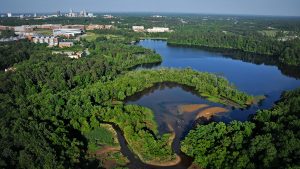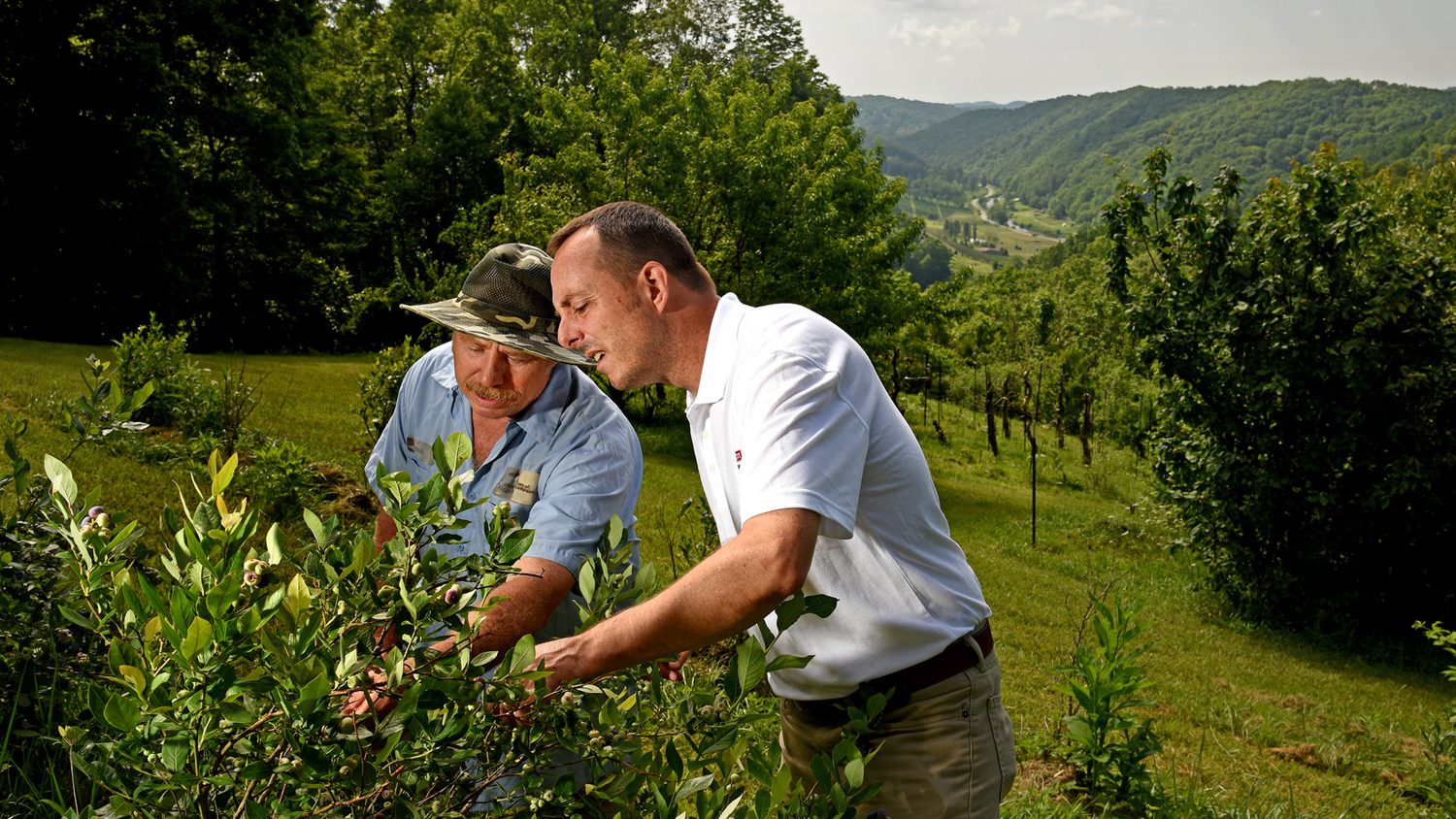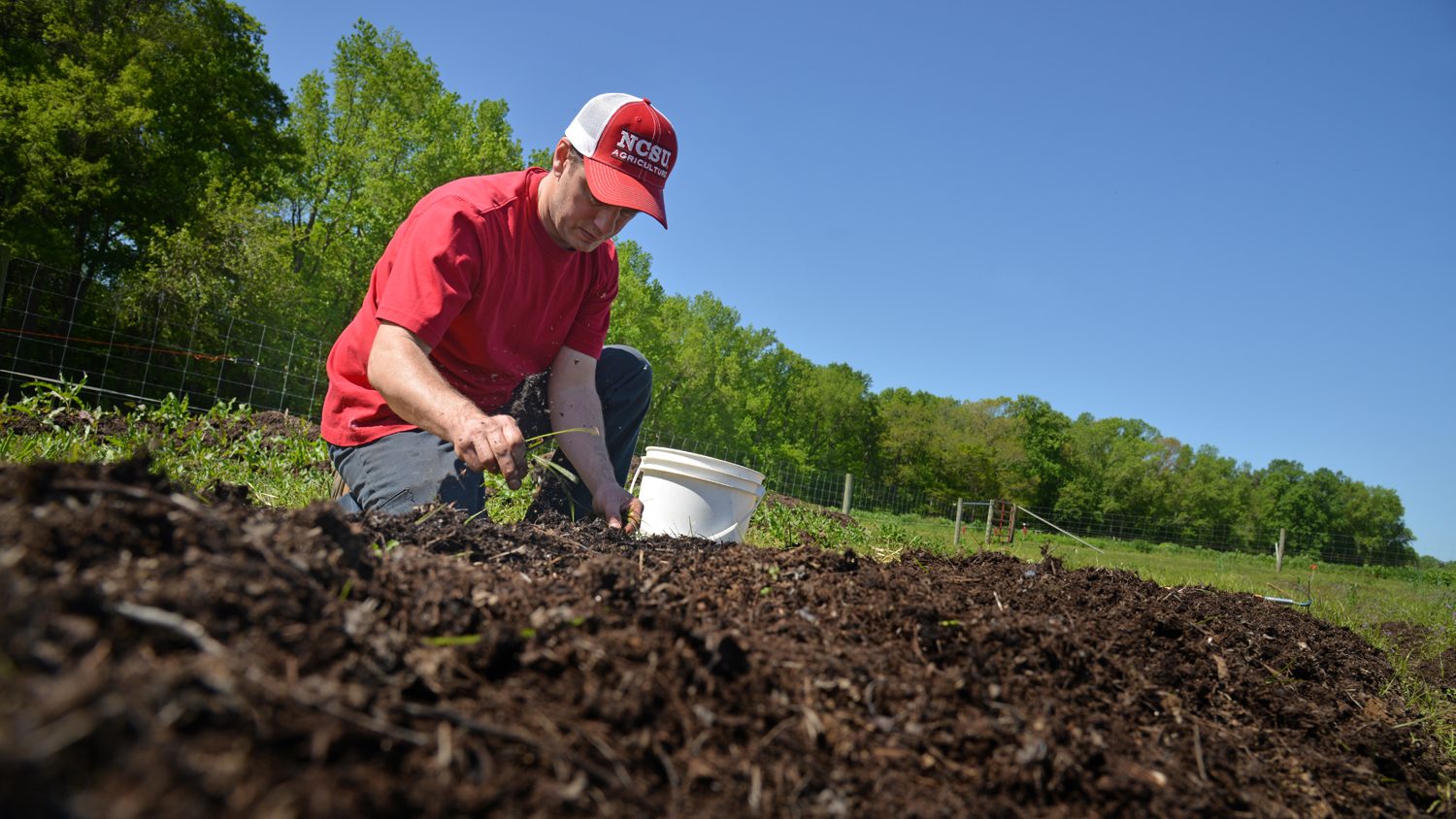
Deanna Osmond and Wendell Gilliam (retired) have research on the effects of nutrient contributions from agricultural and forested systems on the water quality draining from watersheds. As part of this effort, they have evaluated the effectiveness of different conservation practices, especially riparian buffers, as buffers are important in controlling nonpoint source pollution by removing nutrients and sediment. This research involves multiple scales.
Owen Duckworth conducts laboratory research to elucidate denitrification potential of riparian buffers. Osmond and Duckworth connect the laboratory data to field efforts across the state. Current research is elucidating surface pollutant losses from conventional VS organic systems produced with conservation and conventional tillage (Deanna Osmond).
An extension of this research involves the development of decision support systems that quantify pollutant reductions due to conservation practices and publications for the citizens of North Carolina (NC State Soil Science Publications).
In addition, interdisciplinary research is conducted on understanding and predicting the complex interactions between modern agricultural and forestry production systems (e.g. confined animal feeding operations, tillage operations, prescribed burning) and air quality (local and regional ambient atmospheric concentrations of various gaseous species, and fine and coarse particulate matter).
Current work by Wayne Robarge focuses on the fate and transport of ammonia emitted from animal operations and use of commercial fertilizers in row crop agriculture. Developing research areas include the influence of prescribed burning on local air quality and remobilization of macronutrients and trace metals (such as mercury) and their impact on nearby terrestrial and aquatic ecosystems.

